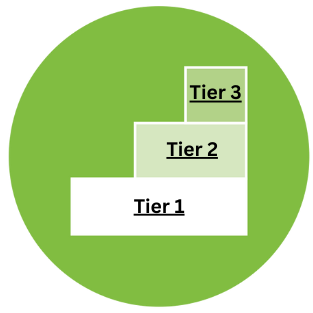You are here
Data Meeting Facilitation Guide
Introduction
The Colorado Multi-Tiered System of Supports (COMTSS) Data Meeting Facilitation Guide was developed to assist school educators as they engage in dialog during decision-making team meetings. The foundation of this tool was based upon the handbook Implementing Structured Data Meetings developed by the Meadows Center at the University of Austin TX and the English Learner Institute for Teaching and Excellence (ELITE). The Colorado Department of Education (CDE) would like to thank the Meadows Center and ELITE for granting permission to use their facilitation guide as a springboard for the CDE COMTSS Data Meeting Facilitation Guide.
The tool is organized into three sections that roughly align to the cadence of a typical school year (beginning, middle, end) to add a level of specificity to data collection, analysis, corresponding questions, and decisions that teams generally consider during different times of the school year. Within each of these broad sections, the document is further divided into Tier 1, 2, and 3 as the layered continuum helps with organization and access to the supports through layers that increase in intensity.
Starting with tier 1 adds a strong universal foundation that is essential and ensures that prevention is emphasized so that the entire system can anticipate learning needs and respond more quickly and systematically to those needs. As supports intensify, decision making teams naturally move from system level analysis and decision-making activities toward a more individualized approach as increasing the ability of school systems to provide equitable academic and behavioral support matched intentionally to student need.
- The Beginning of Year (BOY) facilitation guide is designed to support teams in looking at data and goals set at the end of the previous year and any beginning of the year data to determine intentional BOY instruction, intervention, and progress monitoring for all students.
- The Middle of Year (MOY) guide is designed to support the team in looking at data gathered since the BOY and to determine what adjustments to instruction and intervention are necessary to support the academic and behavioral growth of all student groups.
- Finally, the End of Year (EOY) guide is designed to support teams in analyzing data gathered throughout the year to determine successes and areas of need regarding instruction, intervention, progress monitoring and systems implementation to better support all student groups. Additionally, the EOY facilitation guide includes using EOY data to set instruction and intervention goals and identify needed systems changes for the next year to better support all student groups.
Purpose
The COMTSS Data Meeting Facilitation Guide is helping teams by increasing efficiency and productivity by adding structures and processes that help guide them through data selection, organization, analysis, and decision-making. The Data Meeting Facilitation Guide follows the Four Step Problem Solving process in the following ways:
Step 1: Problem Identification. The Data Meeting Facilitation Guide can assist teams in identifying a system, school, grade, class-wide or an individual academic, behavioral or social-emotional problem that is preventing them from achieving grade-level expectations.
Step 2: Problem Analysis. The Data Meeting Facilitation Guide can effectively assist teams in analyzing the root cause of the problem.
Step 3: Plan Implementation. The Data Meeting Facilitation Guide will help inform decisions around intervention implementation.
Step 4: Plan Evaluation. The Data Meeting Facilitation Guide will guide teams in determining if the intervention resulted in positive outcomes for the targeted population.



Connect With Us





